ROUTE OF THE MAYA
November 9 - 26, 2010
Page Four
Honduras
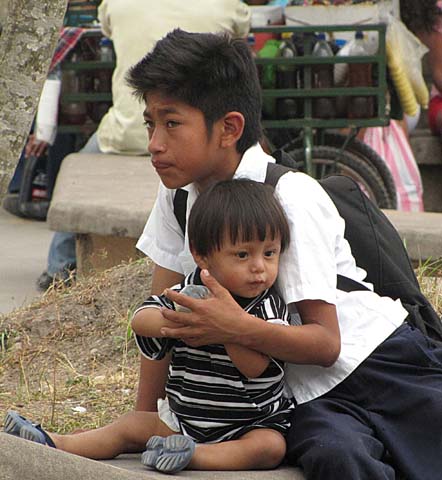
A brother taking care of his little brother in the central plaza of Copan Ruinas, the small town near
the Copan ruins. The older brother is in his school uniform.
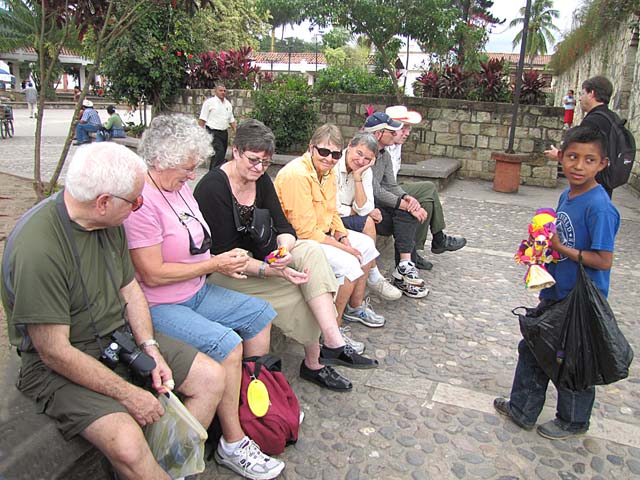
Some of our tour group in the plaza of Copan Ruinas. A young boy is trying to sell them corn husk dolls.
Kids go to work early in Central America. This boy is from a Mayan village that some of us went to that
afternoon. The kids come to this town to try to sell the dolls made in the village.
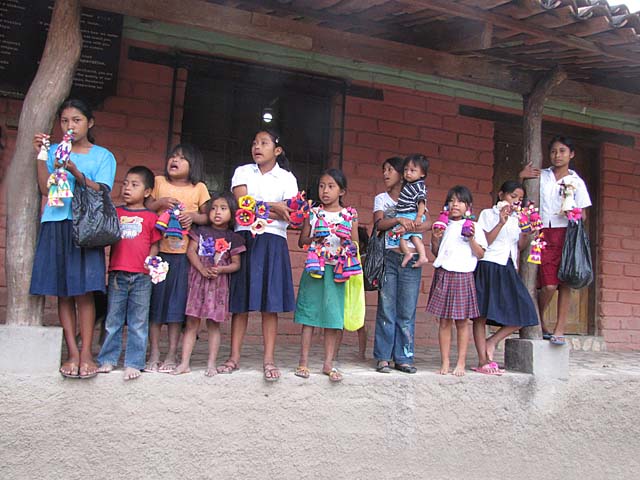
Some in our group opted to go on horseback to the small Mayan farming village of La Pintada near Copan.
Shown here are some of the children singing the national anthem of Honduras to us in their Mayan language.
The modern Maya practice their own brand of Christianity, a blend of Catholic tradition and ancient ritual.
Mayans have long been farmers and traders, and this is still true today. Most farming is subsistence agriculture
and the main crops are beans and corn. The fields are cleared by slashing and burning, the same as it was done
by the early Mayans two thousand years ago. There are around 30 different indigenous Mayan languages.
Most Maya also speak Spanish. The kids are standing in front of a shop where the community sells the dolls.
Organizations, including the Japanese Government, have helped the community build the shop and train the
women in making the dolls.
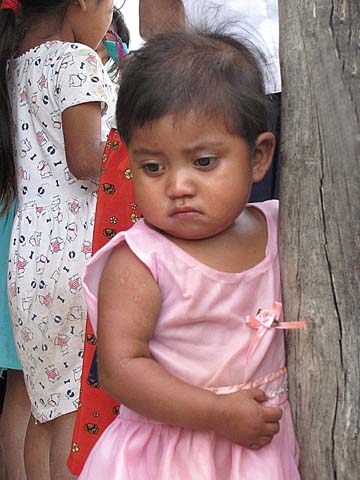
A young child hangs out alone near the other children.
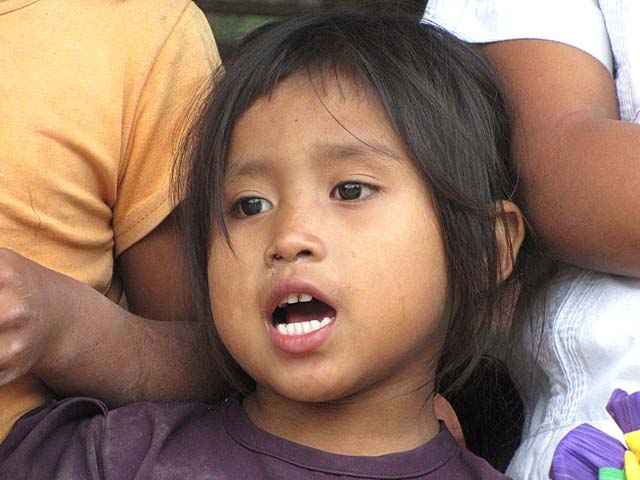
One of the girls singing to us.
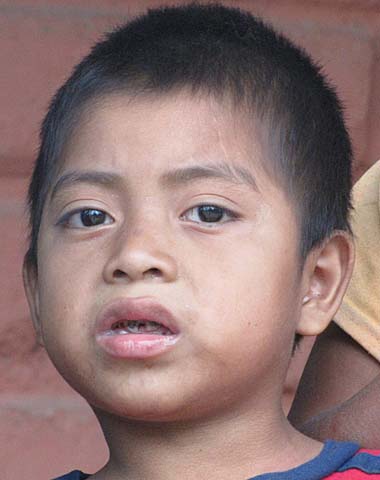
Many of the children are missing teeth, rotted or pulled from
lack of care.
Health care is largely nonexistent.
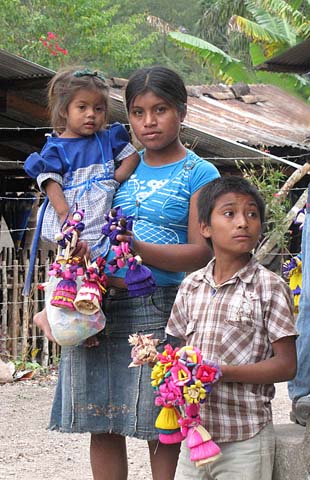
The villagers were used to having their picture taken
since some tourists come here to see the village and
buy the dolls.
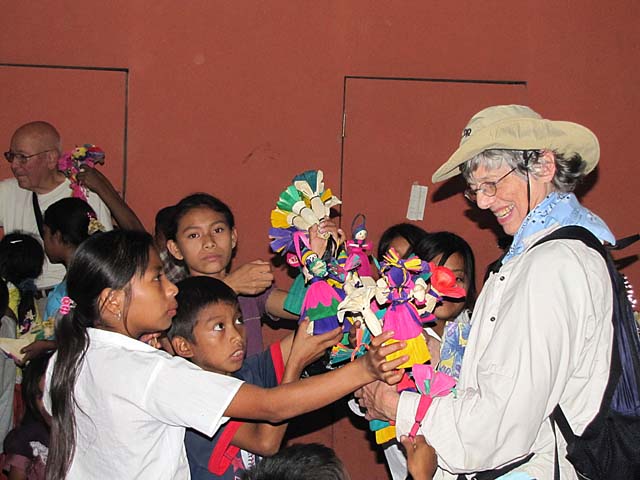
As we were arriving, we were greeted by many children running barefoot and holding out the corn husk dolls.
They say "One dollar. One dollar." One may give you a bargain and say "Two for two dollars."
Here, inside
the shop, we were surrounded by the kids, each imploring us to buy from them. We had a mixture of feelings,
including compassion, heartbreak, uncertainty as to what to do.
We met one woman with 13 children,
ranging from age 2 to 24. The culture and religion promotes this. Education is limited. One young girl approached
me and said her name was Helen and that she had been to 6th grade. She spoke limited but very clear
English to me. I asked our tour guide about her later. Our guide told us that a previous tourist had taken an
interest in Helen and had offered to pay for her schooling all the way through high school and beyond. Helen
decided not to take advantage of this opportunity, so her schooling will likely stop at the 6th grade level.
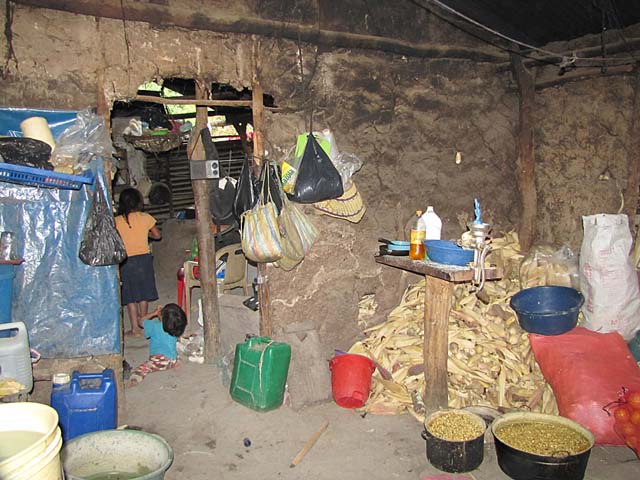
Inside a Mayan home in the tiny Mayan village of La Pintada. The descendants of the ancient Mayans form a
sizable population today throughout the Maya area and maintain a distinctive set of traditions and beliefs.
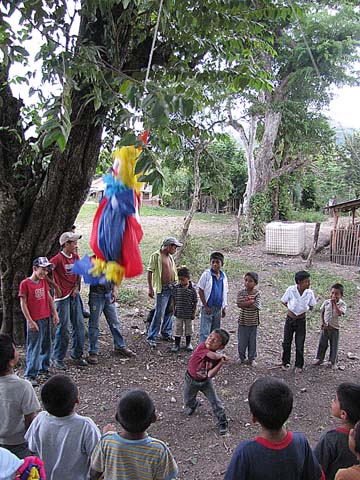
Our tour guide Ivania had bought a pinata filled with candy,
and we watched the kids trying to break it open.
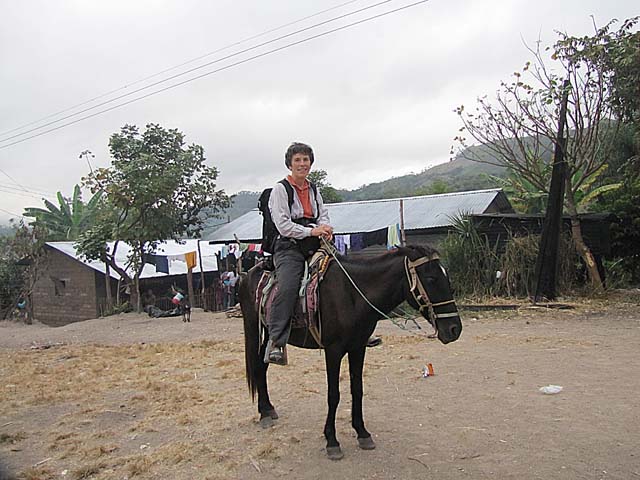
Here I'm waiting for our group to leave the village. There is not much to the village with a few huts, a very small
school, a soccer field. Our trip there was on horseback on a dirt road that runs along the Copan River.
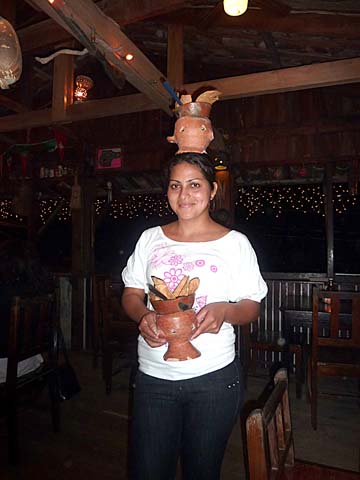
In the evening, some of us went to dinner at a restaurant
in Copan Ruinas. Here a waitress brings us chips and salsa.
Our drinks were also brought to us balanced on waitresses'
heads. Not a drop spilled.
Link to Page 5 - Guatemala
Link to Page One of Route of the Maya
Pat's Home Page